***
Title: El Croquis 201. Caruso St John 2013-2019
Authors: Fernando Márquez Cecilia and Richard Levene
Edited by: El Croquis
2019. ISBN: 978-84-120034-3-7
Language: Spanish and English
303 pages
***
“Our office has always carried out work related to things we have seen before. We are interested in the emotional effect that buildings can have. We are interested in how buildings have been constructed in the past and how new constructions can achieve an equivalent material and formal presence. We are confused by the laissez faire state of contemporary architecture. In this atmosphere of excess we are drawn to the intimate artistic ambitions of past architectural traditions. (…)Anything that can contribute to the fragile continuity between the contemporary situation and past architectures is worthwhile. Architecture can only continue to be a discipline that is socially and artistically relevant through understanding and reflection on the past”.
“Nuestro estudio siempre ha llevado a cabo trabajo relacionado con cosas que habíamos visto antes. Nos interesa el efecto emocional que los edificios pueden lograr. Nos interesa ver cómo se han construido edificios en el pasado y cómo las nuevas construcciones pueden lograr una presencia material y formal equivalente. Estamos confundidos por el estado de laissez faire en que se encuentra la arquitectura contemporánea. En este ambiente de exceso nos sentimos atraídos por las intimistas ambiciones artísticas de tradiciones arquitectónicas pasadas. (…)Todo aquello que puede contribuir a la frágil continuidad entre la situación contemporánea y las arquitecturas pasadas merece la pena. La arquitectura solamente podrá continuar siendo una disciplina relavante a nivel social y artístico a través de la compresión y la reflexión sobre el pasado.”
Adam Caruso. The feeling of things. Ediciones Polígrafa, page 25
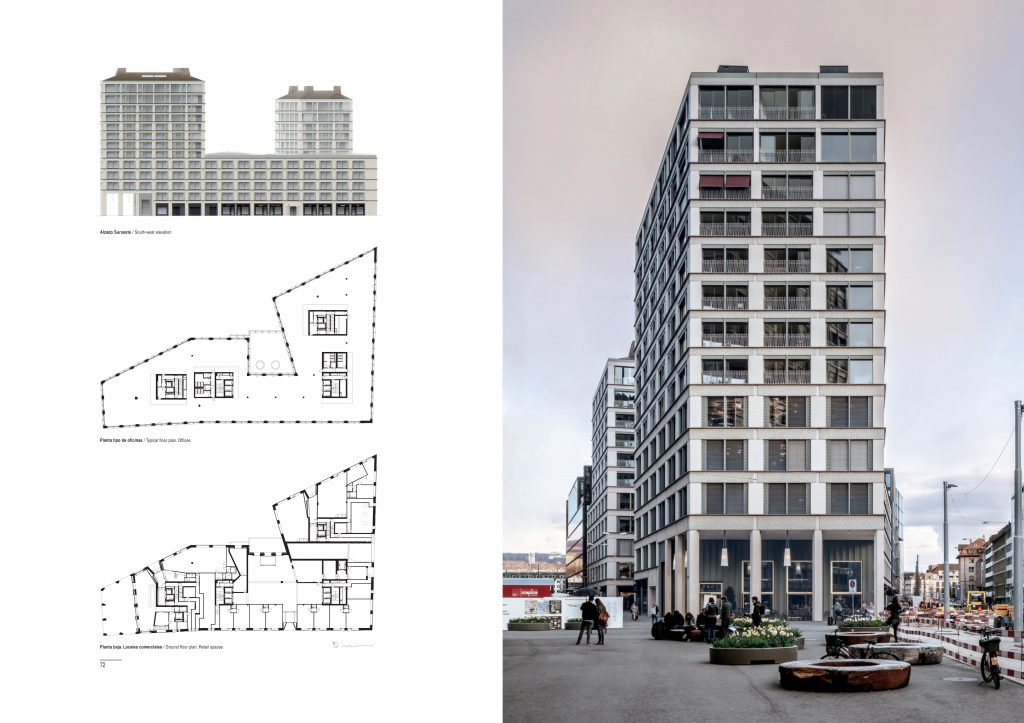
I
The plaza is set on a strange interstice, in an area where two moments overlap at the same time. On the one hand, modest and somewhat old buildings host families or institutions that are already veterans in the city. On the other hand, modern buildings, many of which are still incomplete, are piled up on partially paved sidewalks by the trains that relentlessly land in the station. The space is almost empty. Some tree pits are clumsily arranged to hold some flower bunchs. The asphalt pavement simply seems to have been produced for another function. One side of the plaza is closed by a powerful porticoed structure, perhaps a reminder of others, maybe more successful urban spaces. Thick concrete elements, of an ocher tone, neat, are arisen on that grey asphalt as if they were trying to offer shelter in the middle of a storm. In the background, green waves like foliage bring a more human scale to this place. Up to the top, architraves, columns and mouldings are superimposed in an order that defies the apprehension of the eye that has observed the classical world. Some latent quality, however, keeps those distant relatives present here. Two steps from the sky, a full view of the railway tracks, burgundy canopies have been unrolled to offer protection from the rays of a sun that today forgot to rise.
La plaza se coloca en un intersticio extraño, en un área donde dos momentos se superponen en el mismo tiempo. De un lado, edificaciones modestas algo vetustas alojan familias o instituciones que son ya veteranas en la ciudad. Del otro, modernas edificaciones, muchas aún incompletas, se amontonan sobre aceras parcialmente asfaltadas al rebufo de los trenes que sin descanso acometen la estación. La plaza está prácticamente vacía. Unos aparatosos alcorques se disponen con torpeza para alojar un puñado de flores. El pavimento de asfalto parece, sencillamente, propio de otra función. Cierra un lado de la plaza una potente estructura porticada, recuerdo quizá de otros espacios urbanos algo más afortunados. Gruesos elementos de hormigón, de un tono ocre, pulcros, se apoyan sobre aquel asfalto gris como pretendiendo ofrecer refugio en medio de una tormenta. En su fondo, ondas verdes como follaje aportan una escala más humana a este lugar. Hasta la cima, arquitrabes, columnas y molduras se superponen en un orden que desafía lo aprehendido por el ojo que haya observado el mundo clásico. Alguna cualidad latente, sin embargo, mantiene a estos parientes muy lejanos aquí presentes. A dos pasos del cielo, visión completa de las vías de tren, unos toldos de color burdeos han sido desplegados para ofrecer protección frente a los rayos de un sol que hoy se olvidó de salir.
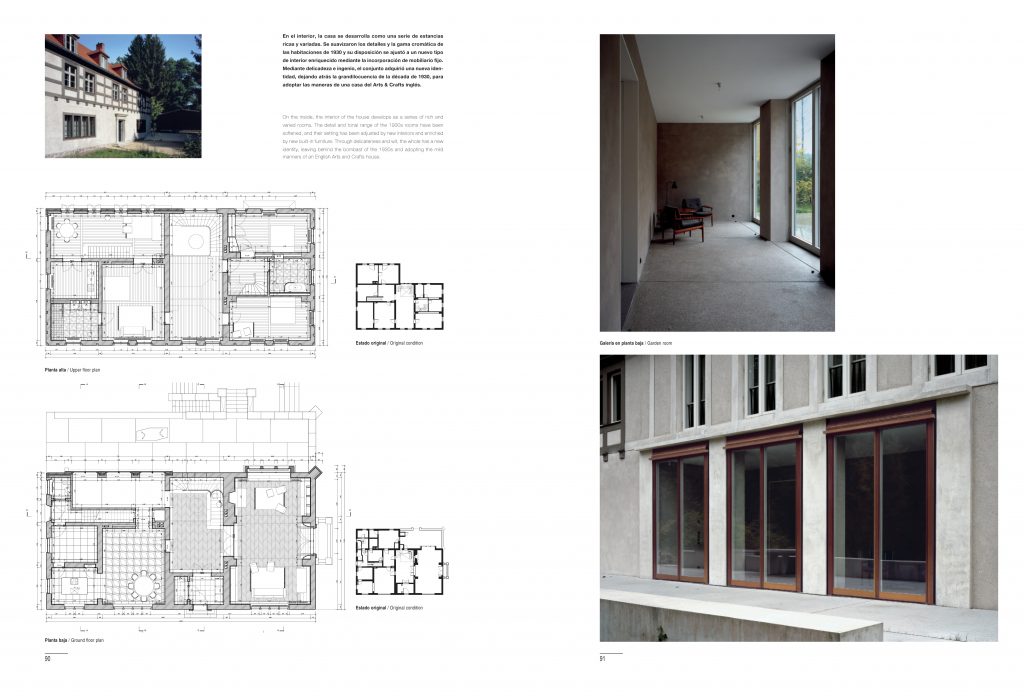
II
First move. The main facade of the house presents a sober and flat presence, only altered by the couple of centimetres that the heads of the beams fly over the grey plaster. The shadow cast in this way does not alter the monotonous order of the wooden framework that frames the white-coloured framing windows of indiscernible time. The access space, flush with the facade, is emphasised rather unusually with a superimposition of analogous orders finished off in a flat tympanum of a monumental neoclassical nature. The gestural effort does not constitute, even with the timid layout of some steps at the entrance, that a sense of place is felt at any moment. Second Movement. Crossing a small threshold that gives some depth to the act of entering a home, the coat now rests in the walnut wardrobe. Third Movement. The stairs room. Our footprints have left a slight mark of water and mud that mixes with the oak spikes of the parquet. From the kitchen comes a subtle aroma of freshly brewed coffee. The children are playing upstairs. Their voices rush somewhat boisterously through the stairwell. The light that streams through a window, still out of reach, invites you to move forward. The trees shake their branches out there. At the foot of the staircase, the green of the garden settles in the heart of the house through an ambiguous threshold that seems to be displaced from the main entrance. The staircase’s balaustrade has vertical joints now emphasized by our proximity. On its lightened surface, the handrail concludes its journey by rising up before us, you are welcome. Fourth movement. The smell of coffee seems to have condensed here. Two still-smoking cups are slowly cooled on a table placed in front of the opening of the third hole that structures this room. Seven metres long by three metres wide, it houses the interstitial space that, between the garden and the staircase room, negotiates the desire to go out and breathe the fresh air with the laziness that this cold wind provokes. If we slip through the main entrance in an instant, the hours pass by slowly at this open shelter which, having been newly created, seems to retain all the memories of this house.
Primer movimiento. La fachada principal de la vivienda presenta un carácter sobrio y plano, tan sólo alterado por el par de centímetros que asoman las cabezas de las vigas sobre el revoco gris. La sombra así arrojada no altera el orden monótono del entramado de madera que enmarca unas ventanas de perfilería blanca y tiempo indiscernible. El espacio de acceso, enrasado con la fachada, se enfatiza más bien con poca fortuna con una superposición de órdenes anácronicos rematados en un tímpano plano de una monumentalidad neoclásica. El esfuerzo gestual no constituye, ni siquiera con el tímido trazado de unos escalones al entrar, que se formalice en ningún momento un sentido de lugar. Segundo Movimiento. Atravesado un pequeño umbral que da algo de profundidad al acto de entrar a un hogar, el abrigo reposa ya en el ropero de nogal. Tercer movimiento. El cuarto de la escalera. Nuestras huellas han dejado una ligera marca de agua y barro que se mezcla con las espigas de roble del parqué. Desde la cocina llega un sutil aroma a café recién hecho. Los niños juegan en el piso de arriba. Sus voces se precipitan algo alborotadas a través del hueco de la escalera. La luz que se cuela a través de una ventana, aún fuera de nuestro alcance, invita a avanzar. Los árboles agitan sus ramas ahí afuera. Al pie de la escalera, el verde del jardín se instala en el corazón de la vivienda a través de un umbral ambiguo que parece desplazado desde el acceso principal. El peto de la escalera presenta unas juntas verticales enfatizadas ahora por nuestra cercanía. Sobre su superficie aclarada, el pasamanos concluye su recorrido levantándose ante nosotros, sed bienvenidos. Cuarto movimiento. El olor a café parece haberse condensado aquí. Dos tazas aún humeantes se enfrían lentamente sobre una mesa colocada frente al vano del tercer hueco que estructura esta estancia. Siete metros de largo por tres de ancho, alberga el espacio intersticial que, entre jardín y el cuarto de la escalera, negocia las ganas de salir a respirar el aire fresco con la pereza que este viento frío provoca. Si a través del acceso principal nos deslizamos en un instante, las horas se detienen en este refugio abierto que, habiendo sido recién creado, parece retener en él todas las memorias de este hogar.

III
Although the newly built houses want to contradict it with still a little dull residential atmosphere, the spine of the viaduct reminds us of the industrial origin of this land. Its arches, made of stone blackened by smoke and water, now protect the glimmers of shops and fashionable premises. Everything is bright, everything is grey. The sadness of this neutral beings now faces another contradiction: red and yellow walls keep a disparity of objects and movements intuited through the windows. A white linteled structure, which has not known soot, contains the agitation that is the germ of every urban situation. Its elements are piled up with a tectonics halfway between the monumental, again, and the industrial way in a modular system for serial construction. The grooves in the architraves reinforce the rhythm of the supporting structure from its secondary order. At street level, a bread factory floods the neighbourhood with the sweat of its work in the form of the smell of freshly baked wheat. The double-height portico, with its yellow front, is occupied by chairs, tables, people who laugh, talk or look silently at the breadcrumbs that their lunch has left on their plate. A few meters higher, the galleries, red front, are occupied by groups or couples who, having already finished their lunch break, hurry up their cigarette before returning to work. Some half-opened window filters out the sound of some machines that are unrecognizable from the shadow of this small chestnut tree. On the top floor, the red wall is set back to make room for a larger gallery. This act of generosity is not taken advantage of, now, by anyone attentive. Two doves play at chasing each other in line on the moulding that ends the balaustrade. From down here they look like a couple of tightrope walkers.
Aunque las viviendas de obra nueva quieran contradecirlo con un aire residencial todavía un poco desangelado, la espina del viaducto recuerda el origen industrial de este terreno. Sus arcos levantados con piedra ennegrecida por el humo y el agua protegen ahora los destellos de tiendas y locales de moda. Todo es brillo, todo es gris. La tristeza de lo neutro soporta ahora otra contradicción: unos muros rojos y amarillos guardan una disparidad de objetos y movimientos intuidos a través de las ventanas. Una estructura adintelada blanca, no ha conocido el hollín, contiene la agitación que es germen de toda situación urbana. Sus elementos se apilan con una tectónica a medio camino entre lo monumental, de nuevo, y lo industrial de un sistema modular para construcciones en serie. Las acanaladuras de los arquitrabes refuerzan desde su orden secundario el ritmo de la estructura portante. A nivel de calle, un obrador de pan inunda el barrio con el sudor de su trabajo en forma de olor a trigo recién horneado. El pórtico de doble altura, frente amarillo, es ocupado por sillas, mesas, personas que ríen, conversan o miran en silencio las migas de pan que su almuerzo ha dejado en el plato. Algunos metros más arriba, las galerías, frente rojo, se ocupan con grupos o parejas que, habiendo agotado ya su descanso para comer, apuran su cigarro antes del regreso a la tarea. Alguna ventana entreabierta filtra el sonido de unas máquinas que son irreconocibles desde la sombra de este pequeño castaño. En la última planta, el cerramiento rojo se retranquea para dejar espacio a una galería más amplia. Este acto de generosidad no es aprovechado, ahora, por nadie atento. Dos palomas juegan a perseguirse en línea sobre la moldura que pone fin al peto. Desde aquí abajo parecen una pareja de funambulistas.
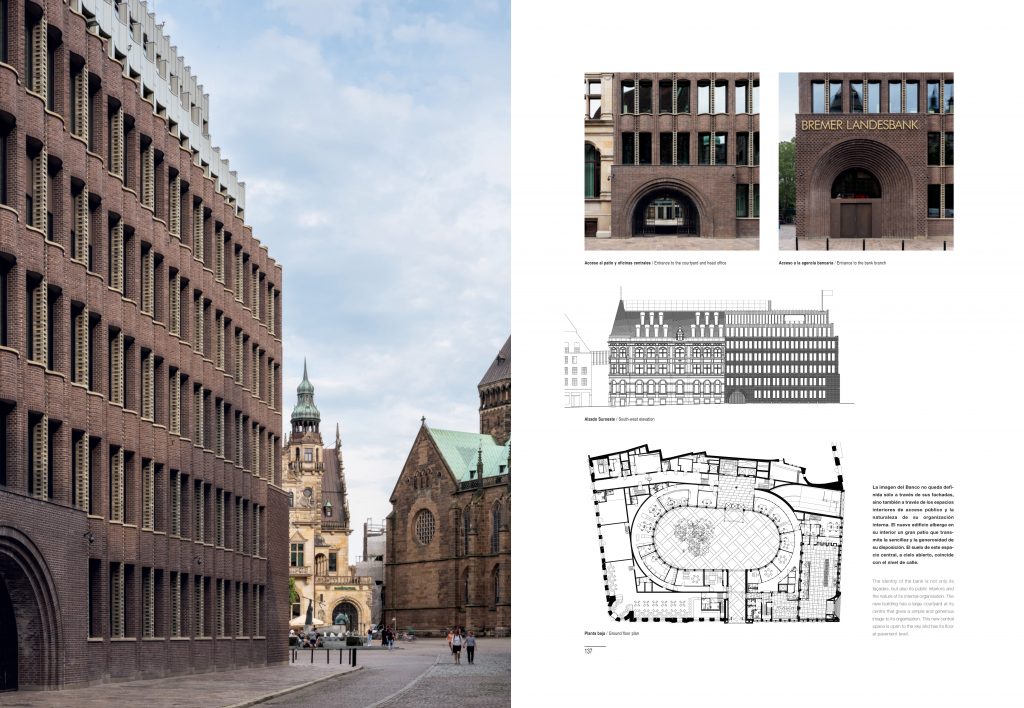
“Instead of trying to conceptualize urbanism, it is possible that a critical architecture can emerge that ignores the outstanding and the general and works with the extremely specific small. Architecture must be sensitive to the emotional qualities that define the city, melancholy, expectation, pathos, hope. If we accept that architecture is concerned with altering and expanding what is already there, we can engage with the powerful presence of the real, so that the aura of urbanity is amplified in the place where work is being done. The complexity and interconnectedness of the city is sustained by these examples of profound invention”.
“En lugar de intentar conceptualizar el urbanismo, es posible que pueda emerger una arquitectura crítica que ignore lo destacado y lo general y trabaje con lo pequeño extremadamente específico. La arquitectura debe ser sensible a las cualidades emocionales que definen la ciudad, la melancolía, la expectación, el pathos, la esperanza. Si aceptamos que la arquitectura se ocupa de alterar y ampliar lo que ya está ahí, podemos implicarnos con la poderosa presencia de lo real, de modo que el aura de urbanidad se amplifique y amplíe en el lugar en que se está trabajando. La complejidad y la interconexión de la ciudad se ve sostenida por estos ejemplos de invenciones profundas.”
Adam Caruso. The feeling of things. Ediciones Polígrafa, page 40
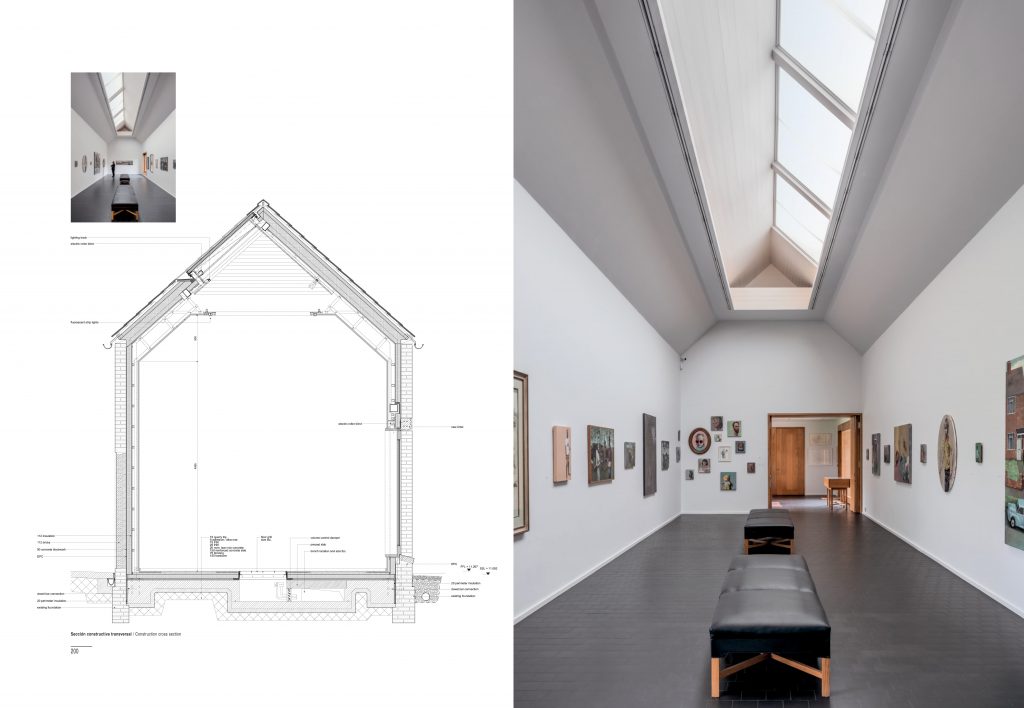
***
Go and get one Croquis for Christmas… he repeated with his usual mix of irony and warning. Well, yes. Between throwing stones at the police in Malasaña, was his other incitement, and acquiring some issues of El Croquis I chose the safest option and the one that could facilitate a more successful existance at the school of architecture. The last issue of Herzog and de Meuron at that time, these guys willnever stop playing rock & roll, and Tadao Ando’s omnibus, what black and white photos, were the object of my choice. I recognize here for the first time, in public, that beyond the first fascination I have never been able to understand the architecture of him. Then came an endless list of issues, some new, rescued from antique dealers or flea markets, others, until they required by extension and merit an exclusive bookshelf.
Que nos compráramos un Croquis para navidad…repetía con su habitual mezcla de ironía y advertencia a navegantes. Pues sí. Entre ir a tirar piedras a la policía en Malasaña, era su otra incitación, y adquirir algún número de el Croquis yo escogí la opción más segura y la que pudiera facilitarme un paso más exitoso por la escuela de arquitectura. El último número entonces de Herzog y de Meuron, nunca dejan de tocar rock&roll estos chicos, y el ómnibus de Tadao Ando, qué fotos en blanco y negro, fueron objeto de mi elección. Reconozco aquí por primera vez, en público, que más allá de la primera fascinación nunca he sido capaz de comprender la arquitectura del japonés. Después llegaron una lista inacabable de números, nuevos unos, rescatados de anticuarios o mercadillos otros, hasta requerir por extensión y derecho propio una estantería exclusiva.
How to introduce someone who is well known to everyone and who has been with you since this, your little world, is yours? As students we have lived in three different countries. As architects, I think they have been already seven. Wherever we have been, one thing has always remained constant: the presence of El Croquis as a fundamental work of reference. Since the issues that came down in the elevator from the archive of the Fundaçao Gulbenkian in Lisboa to the street vendor who distributed forged copies in trolleys over Shanghai offices. Surely no other architectural publication has achieved a similar presence and recognition all over the world. By placing greater emphasis in its early days on the local Spanish context, and then moving on to focus on omnipresent figures in different latitudes, El Croquis’ editorial criteria has been flexibly adapted to the evolution of architectural practice in recent decades.
¿Cómo presentar a alguien por todos de sobra conocido y que además te acompaña desde que este, tu pequeño mundo, es tuyo? Como estudiantes hemos vivido en tres países diferentes. Como arquitectos, creo que son ya siete. Allá donde hemos estado siempre se ha mantenido una constante: la presencia de El Croquis como obra fundamental de referencia. Desde los números que bajaban en elevador desde el archivo de la Fundaçao Gulbenkian en Lisboa hasta el vendedor ambulante que distribuía en carrito copias falsificadas por oficinas de Shanghai. Seguramente no habrá ninguna otra publicación periódica sobre arquitectura que haya alcanzado una presencia y un reconocimiento parecidos alrededor del mundo. Poniendo mayor énfasis en sus inicios en el contexto local español, para pasar después a poner el foco en figuras omnipresentes en diferentes latitudes, el criterio editorial de El Croquis se ha ido adaptando con flexibilidad al devenir de la práctica arquitectónica en las últimas décadas.
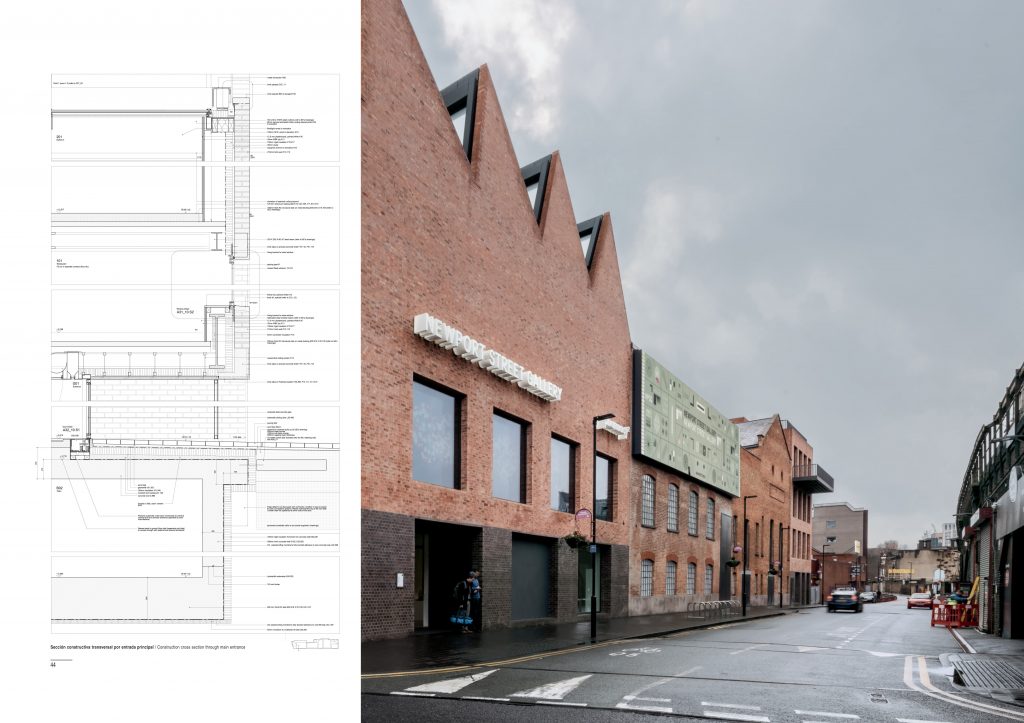
At first glance, it might seem that a publication like El Croquis would not fit within our series “All the Books” in because of its widespread distribution. And it probably would not. Furthermore, Caruso St John are certainly not a team of architects who move on the periphery of the discipline. In spite of the atypical nature of some of their approaches, they enjoy great recognition, we could even say that they are “building a legacy” in countries such as the United Kingdom, Switzerland or Belgium. So, why to look at them from here? We have the feeling that we suffer from a certain Robinson Crusoe complex that sometimes leads us to “exoticise” in excess realities that are foreign to us because of our cultural context, while we take for granted and overcome those that are familiar and closer to us. In order to try to go against our own intentions or beliefs, we understand that it is necessary to question ourselves and repeatedly review our most foundational formative and cultural roots. Only by trying to focus on the close and the distant at the same time could we have a coherent and more complet approach to reality.
A priori podría parecer que una publicación como El Croquis no encajaría por su extendida difusión dentro de la línea que pretendemos trazar en “All the Books”. Y seguramente así sea. Por otro lado, Caruso St John no son desde luego un equipo de arquitectos que se muevan en la periferia de la disciplina. A pesar de lo atípico de alguno de sus planteamientos, gozan de gran repercusión, incluso podríamos decir que están “construyendo escuela” en países como Reino Unido, Suiza o Bélgica. Entonces, ¿por qué dedicarles esta mirada desde aquí? Tenemos la sensación de albergar cierto complejo de Robinson Crusoe que nos lleva en ocasiones a “exotizar” en exceso realidades que nos son ajenas por nuestro contexto cultural, mientras que damos por asumidas y superadas aquellas que nos resultan familiares. Para intentar ir en contra de nuestras propias intenciones o creencias, entendemos necesario ponernos en cuestión y repasar repetidamente nuestras raíces formativas y culturales más fundacionales. Sólo tratando de enfocar al mismo tiempo lo cercano y lo distante se podrá tener una visión coherente de la realidad.
In case there is anyone left who might find it strange, what does El Croquis offer us? Surely the characteristic that has always drawn our attention the most has been its instrumental or operational vocation. By disregarding more speculative academic debates, El Croquis has always presented the work of different architects mainly through built projects. Few publications have been able to present in monographic books such an amount of documentation, also in the execution phase, allowing a very deep knowledge of each of the buildings presented. This pragmatic approach and this desire to be didactic and useful, above and beyond questions of aesthetics in publishing, is a quality that we find outstanding. As practitioners, we can only be grateful for the contribution this has made to our training.
Por si quedara alguien a quien pudiera resultarle extraño, ¿qué nos ofrece El Croquis? Seguramente la característica que más nos ha llamado siempre la atención ha sido su vocación instrumental u operativa. Restando peso a debates académicos más especulativos, El Croquis ha presentado siempre el trabajo de distintos arquitectos a través de su obra, especialmente construida. Pocas publicaciones han sido capaces de exponer en libros monográficos tal cantidad de documentación, también en fase de ejecución, permitiendo un conocimiento muy profundo de cada uno de los edificios presentados. Este enfoque pragmático y esta voluntad de resultar didáctico y útil, por encima de cuestiones estéticas en la edición, es una cualidad que encontramos excepcional. Como arquitectos en práctica, no podemos sino agradecer la aportación que en nuestra formación esto tiene.
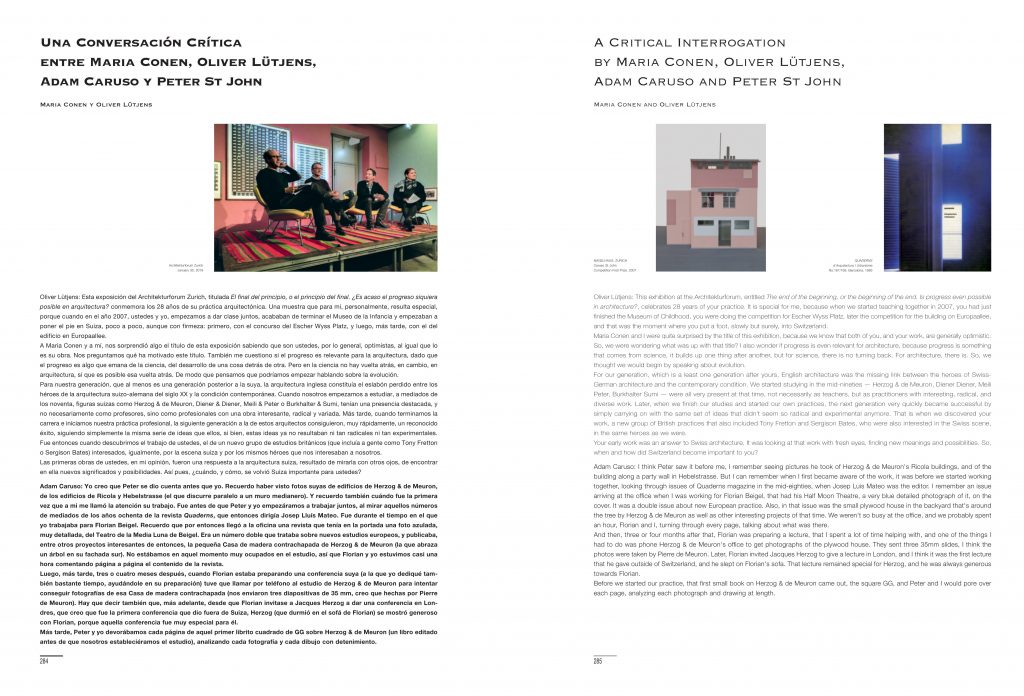
In the case of issue 201 “Caruso St John 2013-2019” 25 different works, 14 of them executed and 11 in development, are displayed. It is a general trend that, in addition to different projects, each issue of El Croquis is completed with an interview and a critical analysis based on the architects work. In the case in question here, we find two interviews. The first one is led by the architect Liza Fior. Being too focused on pragmatic issues of daily practice, it suffers from an excessively corporatist approach to architecture without attempting to step beyond. Unfortunately, her contribution to get architects like Caruso St John explained and undertood will not be particularly celebrated. The shadow of Pier Vittorio Aureli (he was the author of the interview and critic text in the previous monograph on Caruso St John, El Croquis nº166) may be too long. Much more successful is the interview ending the book, conducted by Swiss architects Oliver Lütjens and Maria Conen. Without avoiding confronting the political context, they honestly and critically question such everyday disciplinary problems as the concept of scale, aesthetics, material definition and monumentality.
En el caso del número 201 “Caruso St John 2013-2019” se nos exponen un total de 25 obras diferentes, 14 de ellas ejecutadas y 11 en fase de proyecto o en desarrollo. Es tónica general que, además de distintos proyectos, cada número de El Croquis se complete con una entrevista y un análisis crítico de la obra. En el caso que ahora nos ocupa, nos encontramos con dos entrevistas. La primera de ella está realizada por la arquitecta Liza Fior. Excesivamente enfocada en cuestiones pragmáticas de la práctica diaria, adolece de un acercamiento excesivamente corporativista a la arquitectura sin pretender profundizar demasiado. Por desgracia, su contribución para conocer a unos arquitectos como Caruso St John no será especialmente celebrada. La sombra de Pier Vittorio Aureli (él fue el autor de la entrevista y crítica en el monográfico anterior sobre Caruso St John, El Croquis nº166) puede resultar excesivamente alargada. Mucho más afortunada es la entrevista que cierra el libro, conducida por los arquitectos suizos Oliver Lütjens y Maria Conen. Sin eludir afrontar el contexto político, se cuestionan con honestidad y capacidad crítica problemas disciplinares tan cotidianos como el concepto de escala, la estética, la definición material o la monumentalidad.
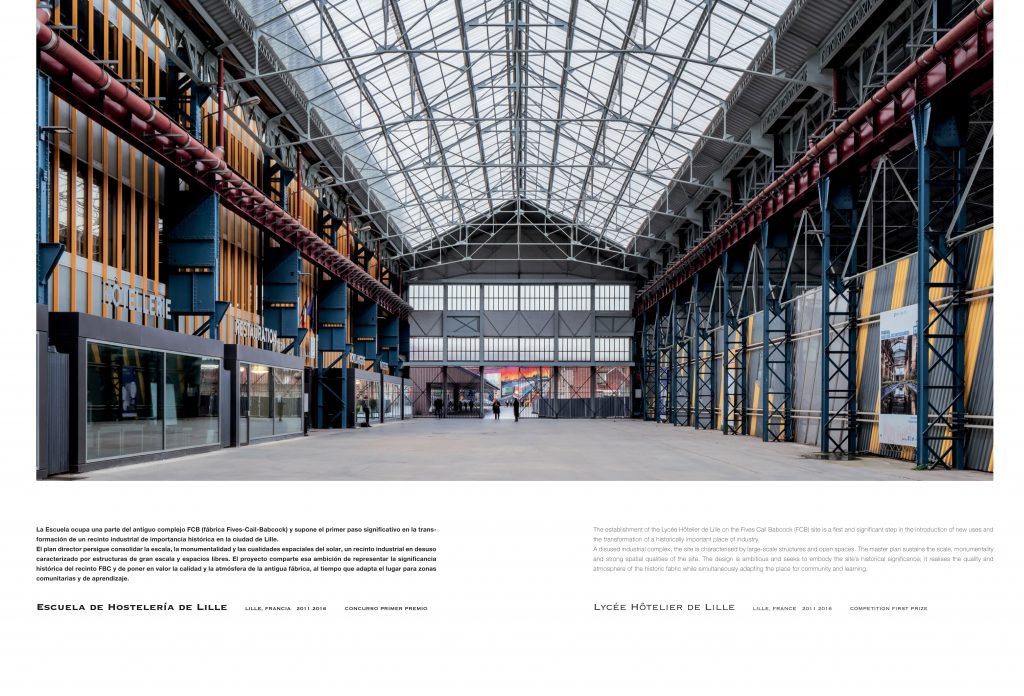
Why Caruso St John? If we were to point out one aspect of the work of these Uk based architects that particularly appeals to us, it would undoubtedly be their capacity fro controversy. Far from any dogmatism in the interpretation of the heritage of Modernism, they move freely between references from any period in the History of Architecture. From the beginning of their career, back in the enthusiastic “High Tech London”, they have always maintained an attitude of rebellion against the academic “establishment”, not avoiding confrontation from positions that are very well grounded in broad knowledge and critical capacity. Their work has focused on such controversial issues in architectural practice as ornamentation, understood in their case as a construction element with a powerful social function giving shape to urban identities. The attention to detail and control of the building process has provided some of their works with quite intense moments.
¿Por qué Caruso St John? Si tuviéramos que señalar un aspecto de la obra de los arquitectos británicos que nos atrae especialmente, esa sería sin duda su capacidad polémica. Alejados de cualquier dogmatismo en la interpretación de la herencia del Movimiento Moderno, se mueven con libertad entre referencias procedentes de cualquier periodo de la Historia de la Arquitectura. Desde el inicio de su carrera, allá por el entusiasta “Londres High Tech”, han mantenido siempre una actitud de rebeldía frente al “establishment” académico, no eludiendo la confrontación desde posiciones muy fundamentadas en un amplio conocimiento y capacidad crítica. Su obra ha puesto el foco sobre temas tan controvertidos en la práctica arquitectónica como la ornamentación, entendida en su caso como un elemento constructivo más dotado de una poderosa función social en la construcción de las identidades urbanas. La atención por el detalle y el control del proceso constructivo ha provisto a algunas de sus obras de momentos de gran intensidad.
Thus, we believe that the study of Caruso St John’s work is a compulsory task for anyone interested in approaching and understanding a particular interpretation of the complex contemporary world in which we live. El Croquis issue 201 is an unavoidable and fully satisfying stop for this purpose.
Así, creemos que el estudio de la obra de Caruso St John constituye una tarea obligatoria para cualquier interesado en acercarse y comprender una interpretación particular de la compleja la contemporaneidad que nos alberga. El número 201 de El Croquis es una parada ineludible para tal fin.
See you in Malasaña
Nos vemos en Malasaña.
